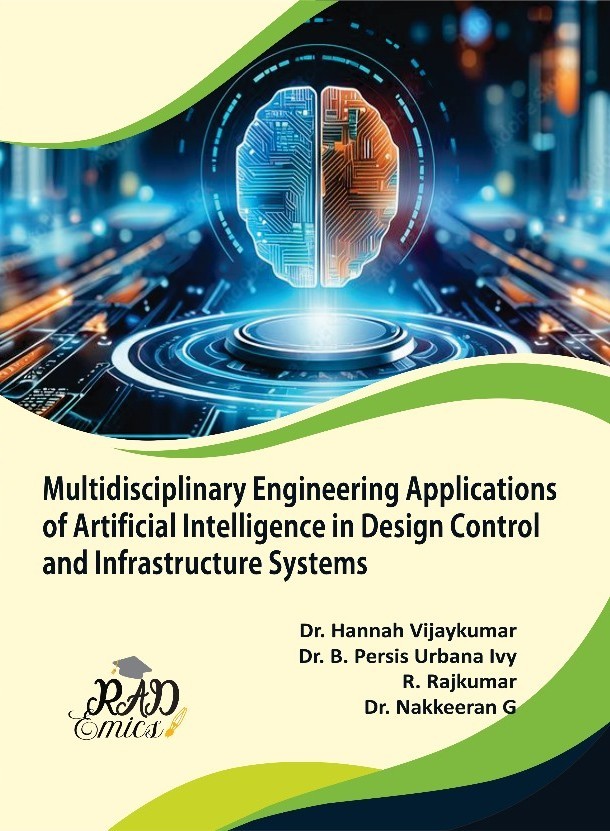
Peer Reviewed Chapter
Chapter Name : AI Based Diagnostic Imaging and Decision Support for Neurological and Cardiovascular Disorders
Author Name : N.B. Prakash, G.R. Hemalakshmi, Sellamuthu Palanisamy Vijayanand
Copyright: ©2025 | Pages: 33
DOI: 10.71443/9789349552609-13
Received: 08/05/2025 Accepted: 12/06/2025 Published: 06/09/2025
Abstract
Artificial intelligence (AI) has emerged as a transformative force in diagnostic imaging, offering unprecedented capabilities in the detection, classification, and prognosis of neurological and cardiovascular disorders. The integration of AI with advanced imaging modalities, including magnetic resonance imaging (MRI), computed tomography (CT), positron emission tomography (PET), electroencephalography (EEG), and echocardiography, enables rapid and accurate interpretation of complex, high-dimensional datasets. This chapter provides a comprehensive overview of AI-based diagnostic imaging and decision support systems, emphasizing their applications in early detection of stroke, neurodegenerative diseases, myocardial infarction, arrhythmias, and other critical conditions. Key research gaps are identified, including variability in imaging protocols, limitations in multimodal and longitudinal datasets, challenges in ground truth annotation, and ethical and regulatory considerations. Furthermore, the chapter discusses strategies to address these limitations, such as the development of standardized imaging protocols, cross-institutional benchmarking, federated learning approaches, and explainable AI frameworks. Case studies and real-world implementations illustrate the potential of AI to enhance diagnostic accuracy, optimize workflow efficiency, and enable personalized treatment planning. By highlighting both current achievements and future directions, this chapter underscores the pivotal role of AI in bridging technological innovation with clinical decision-making, ultimately advancing patient care and precision medicine in neurological and cardiovascular health.
Introduction
Neurological and cardiovascular disorders remain leading contributors to global morbidity and mortality, imposing substantial clinical and economic burdens on healthcare systems worldwide [1]. Stroke, neurodegenerative diseases, myocardial infarction, heart failure, and arrhythmias account for millions of deaths annually and significantly impair quality of life for affected individuals [2]. Early and accurate diagnosis is critical to reducing morbidity, guiding timely intervention, and improving long-term outcomes [3]. Conventional diagnostic approaches rely heavily on the interpretation of imaging modalities such as magnetic resonance imaging (MRI), computed tomography (CT), positron emission tomography (PET), echocardiography, and electroencephalography (EEG) [4]. While these technologies provide high-resolution structural and functional information, their interpretation is often time-intensive, subjective, and prone to inter-observer variability. The complexity and high dimensionality of imaging datasets further challenge clinicians, making the integration of advanced analytical tools increasingly necessary to enhance diagnostic precision and efficiency [5].
Artificial intelligence (AI) has emerged as a transformative tool capable of bridging this diagnostic gap by offering automated, data-driven analysis of complex medical images [6]. Machine learning and deep learning algorithms, including convolutional neural networks (CNNs) and recurrent neural networks (RNNs), have demonstrated remarkable accuracy in detecting subtle pathological changes that may be overlooked in conventional assessment [7]. In neurology, AI systems have been applied to identify early ischemic lesions, quantify brain atrophy in dementia, map lesions in multiple sclerosis, and detect epileptiform activity from EEG recordings [8]. Cardiovascular applications include automated quantification of ejection fraction, plaque characterization in coronary arteries, myocardial perfusion analysis, and arrhythmia prediction using electrocardiographic signals [9]. By augmenting clinician expertise, AI enhances diagnostic reliability, reduces interpretation time, and enables more personalized patient management [10].
Several challenges limit the widespread adoption of AI-based diagnostic systems. Variability in imaging protocols, hardware configurations, and data formats across institutions introduces inconsistencies that reduce model generalizability [11]. The availability of annotated datasets remains restricted, particularly for rare neurological and cardiovascular conditions, which limits robust model training [12]. Ground truth labels are often influenced by the experience and interpretation of individual clinicians, introducing bias and reducing reliability [13]. Additionally, ethical and regulatory considerations, including patient privacy, data security, and algorithmic transparency, complicate deployment in clinical settings [14]. These barriers highlight the necessity for standardized imaging protocols, large-scale multi-institutional datasets, and explainable AI frameworks to ensure both accuracy and trustworthiness of diagnostic models [15].